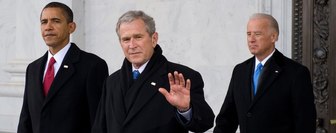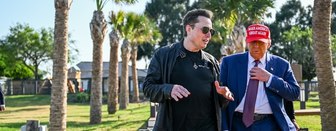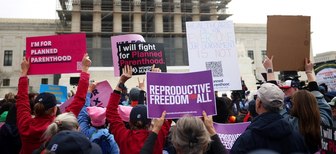Democratic President Barack Obama holds an 8-point lead over Republican challenger Mitt Romney in Minnesota, 52% Obama to 44% Romney, in a YouGov poll of 683 likely voters statewide (recontacted from an initial September poll).
| In Minnesota (Oct 4-11): |
|---|
Partisan loyalty is strong on both sides, with 91% of Democrats and Republicans voting for their party’s presidential candidates. |
Independents narrowly favor Romney, 47%-42%. |
Women favor Obama by 55%-40%, while the race is very close among men in the Gopher State, 49% Obama-47% Romney. |
Obama enjoys a huge lead over Romney in the Twin Cities core (64%-31%) and enjoys a slight lead in the northern part of the state (49%-47%). |
Romney enjoys solid if not overwhelming leads in the Collar Counties and the state’s southern region (52%-42% and 52%-43%, respectively). |
The two candidates are dead-even in the eastern Twin Cities suburbs (49%-49%). |
The oldest voters age 65+ favor Romney (52%-44%), while the youngest under age 30 favor Obama (57%-40%). |
| Net Change in Voter Intention (Likely Voters) |
|---|
| Total | Independents | |||
|---|---|---|---|---|
Sept 7-14 | Oct 4-11 | Sept 7-14 | Oct 4-11 | |
Barack Obama | 50% | 52% | 40% | 42% |
Mitt Romney | 42% | 44% | 43% | 47% |
In the race for Senate, incumbent Democratic Sen. Amy Klobuchar is far ahead of Republican challenger Kurt Bills, 55%-32%.
Likely voters in Minnesota are more likely to vote for Democratic congressional candidates, with 50% intending to vote for the Democratic candidate for the House in their district, and 37% for the Republican.
The poll was conducted online October 4-11, 2012.
Sampling method: Respondents were initially selected on September 7-14 from YouGov’s panel using sample matching. A random sample (stratified by age, gender, race, education, and region) was selected from the 2005–2007 American Community Study. Voter registration, turnout, religion, news interest, minor party identification, and non-placement on an ideology scale, were imputed from the 2008 Current Population Survey Registration and Voting supplement and the Pew Religion in American Life Survey. Matching respondents were selected from the YouGov panel, an opt-in Internet panel.
Respondents were recontacted on October 4-11 for the second wave of the YouGov poll. The percentage of likely voters who were successfully recontacted was 84.1%.
Weighting: The sample was weighted using propensity scores based on age, gender, race, education, news interest, voter registration, and non-placement on an ideology scale.
Number of respondents: 683 likely voters.
Margin of error ± 4.2% (adjusted for weighting).
Click here for September 7-14 results (registered voters).
Click here for October 4-11 results (likely voters).








